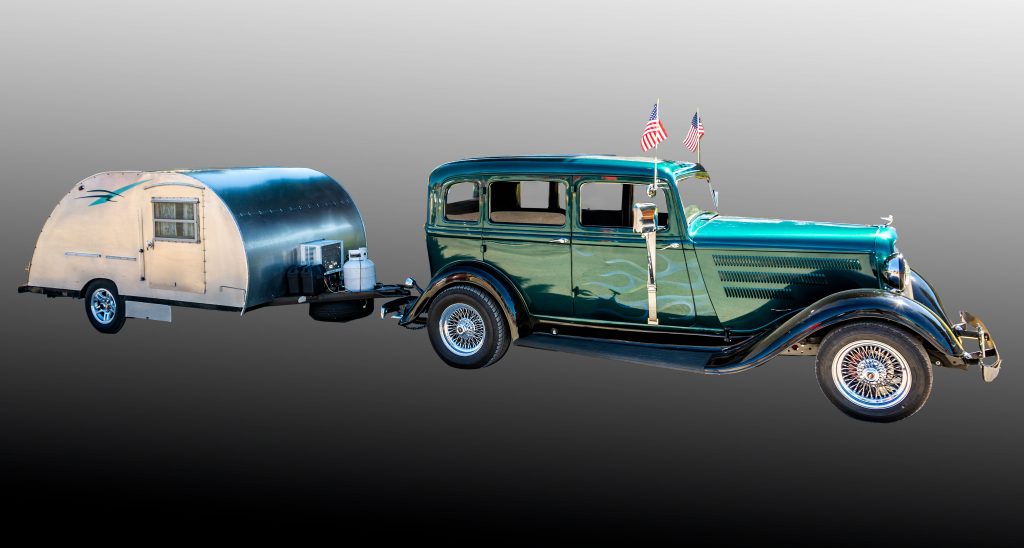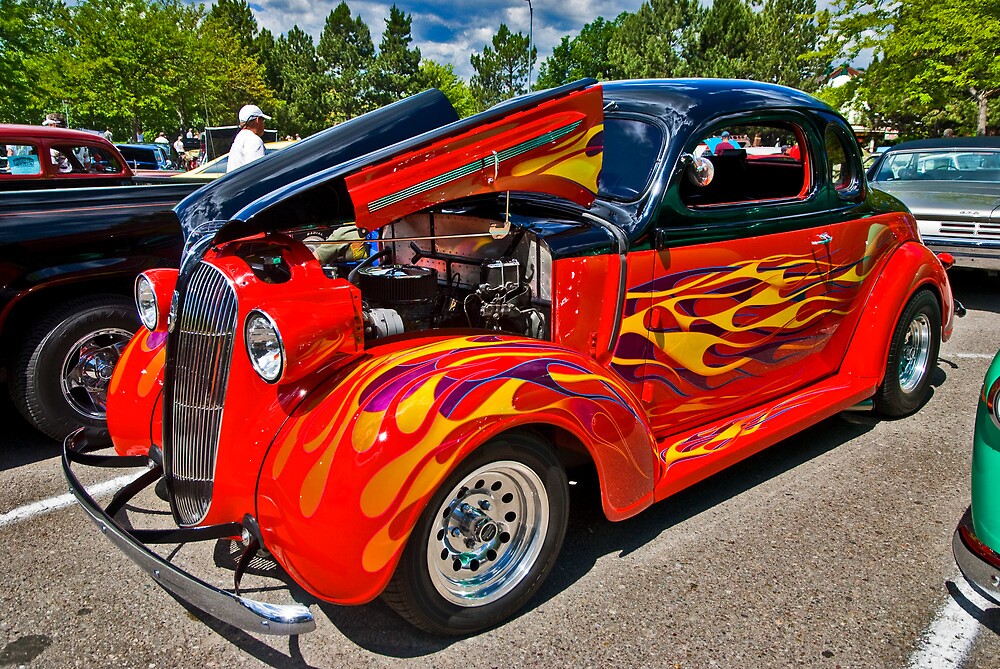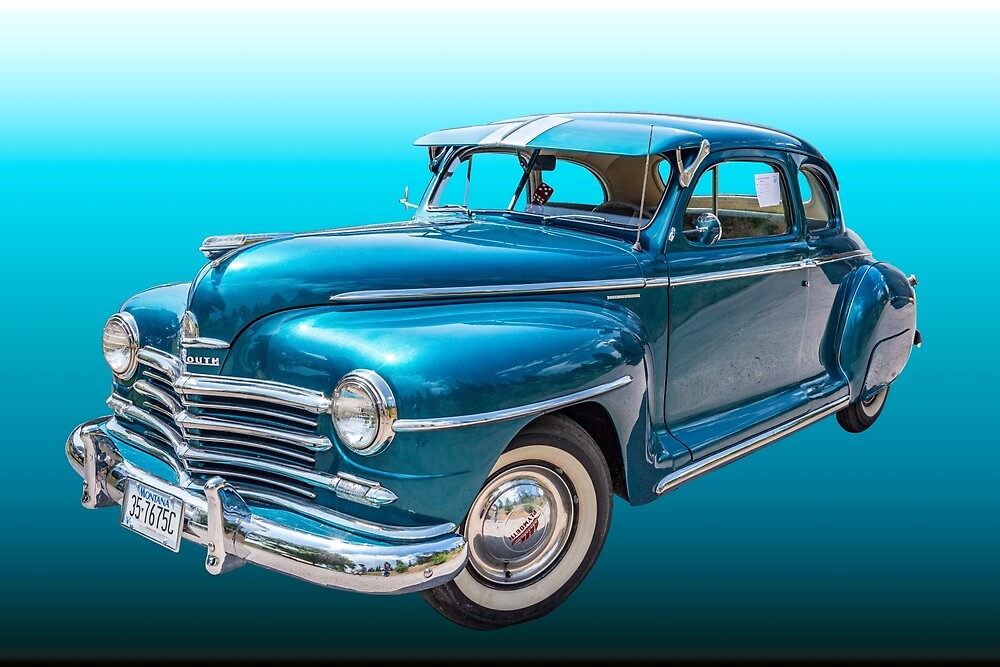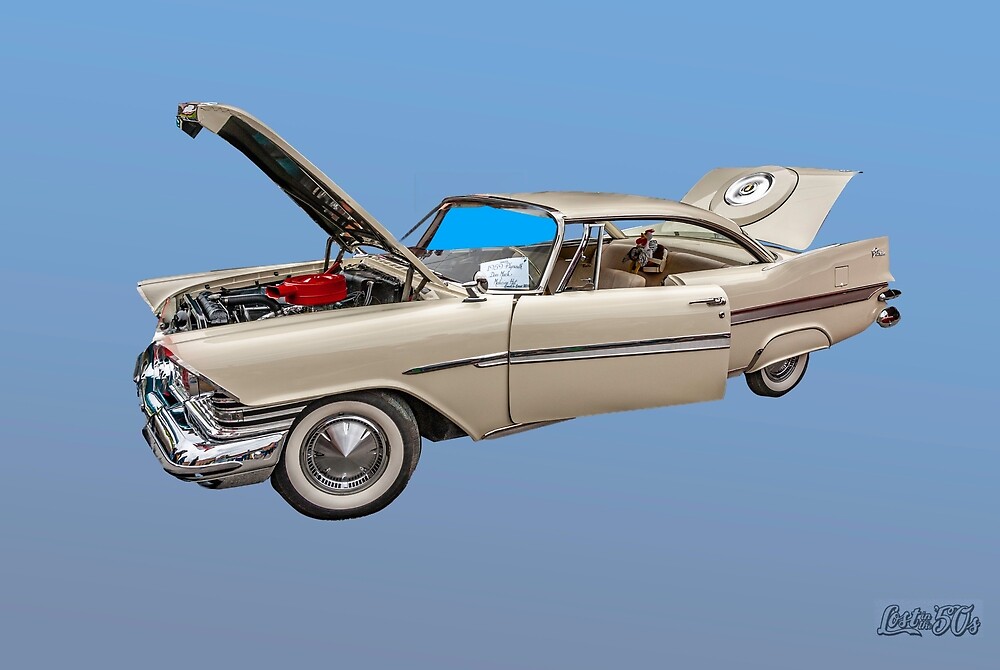Everybody Knows the Name Plymouth

Charles Nash had brought Walter Chrysler to General Motors in 1911. Chrysler left GM and started his own company when he bought Maxwell Motors in 1925. Maxwell began operations in 1904, but by the 1920s, the company was in trouble. Almost immediately after purchasing the company, Chrysler changed the name, naming it for himself, and stopped producing Maxwell automobiles. In 1928, Chrysler decided he needed to produce a low-priced car to compete with Ford and Chevrolet. Joseph Frazer (whom we’ll talk about in June) worked with Chrysler at the time and suggested the name Plymouth. “Everybody in America knows the name Plymouth,” he supposedly said.
The symbol for the new make came from one of the most famous ships in American history. The car’s name, however, did not come from Plymouth Colony, or even Plymouth, England. No, what Frazer referred to was Plymouth Binder Twine. At that time, the Plymouth Cordage Company was the largest manufacturer of rope and twine in the world. American farmers used Plymouth binder twine on a daily basis. After all, in 1928, the U.S. was still a largely agrarian country. Because of that binder twine, Frazer was right. Everybody in America knows the name Plymouth.
Letters as Model Names
When Chrysler took over Maxwell, he kept the car, just changed its name. The 1925 Maxwell became the 1926 Chrysler 52. In turn, the 1926 Chrysler 52 became the 1928 Chrysler Plymouth Model Q which became the 1929 Plymouth Model U. 1931 gave us the PA, which preceded the PB and PC, and finally the PD.
The 1932 PB was the first time Plymouth associated a model name with a year. A four-cylinder engine powered the car, the last four-cylinder in a Plymouth until 1971. Chrysler introduced “floating power” which meant simply that rubber engine mounts cushioned the power plant so that the car didn’t vibrate as much as non rubber mounted engines. A redesigned PC became the new Plymouth Standard 6 which sold through 1933. I would venture a guess that the 1933 shown below does not have a stock engine under that hood.

Chrysler Corporation Grows
Having taken over Maxwell successfully, in 1928 Walter Chrysler brought out a new car, the DeSoto, and almost immediately bought the Dodge Brothers car company. Through the Depression years, he sold Plymouths in the dealerships of all his marques. Plymouths sold so well, the marque may well have saved the company.
Post War Plymouths
By the end of the 1930s, Plymouth had become the third best selling car in the U.S. In 1940 and ’41, the marque almost passed Ford for second place. Along with the rest of the U.S. Auto Industry, no new cars were built during World War II. The 1946 models looked just like the 1942 cars, albeit with a different grill.
Newly designed Plymouths appeared for the 1949 model year, a year later than Ford and Chevrolet. The cars rode a longer wheel base, but were shorter overall than their 1948 predecessors. Definitely boxy, the design of the car allowed a man to get behind the wheel without knocking his hat off. (And yes, in 1949, men wore hats. I still have Poppa’s.) As for models, you could get a Deluxe or a Special Deluxe. But it was still the case, everybody in America knows the name Plymouth.
New Names
1951 brought a new style, definitely more modern looking, but still boxy. The cars also had new model names. While still carrying the in-house letter-number designation, the public came to know the P-23 with one of three names, all beginning with the letter “C.” The Deluxe became the Concord while the Special Deluxe became known as the Cranbrook. In between the two, the Cambridge had no immediate predecessor. Chrysler built these three models, along with the Suburban station wagon, for two years. In 1953 Plymouth’s top of the line Cranbrook had a new designation: the Cranbrook Belvedere.
1954 saw all Plymouth models renamed after fancy hotels. The Cranbrook became the Belvedere, while the Cambridge became the Savoy. At the bottom of the line up, the Concord was now called the Plaza. That name lasted only four years and in 1959, Chrysler demoted the Savoy to the least expensive model and got rid of the Plaza name for good. As a model name, Savoy hung on to 1964 and then was replaced by Fury I.
The Fury Years
Plymouth first used the name Fury to denote a special model Belvedere in 1956. But just as the Cranbrook Belvedere lost the Cranbrook name, in 1959 Fury became a model itself, without Belvedere in its name. The 1960s mujst have been a turbulent time for Chrysler and for Plymouth, as the vehicle sizes kept changing back and forth. Chrysler misread the market and downsized all its cars in 1962 while Ford and GM kept producing “full-sized” vehicles. Chrysler tried to catch up by making the Fury large again in 1965.
The Belvedere, which had been the full-sized Plymouth, became an Intermediate in 1965, and the full-sized line up contained three models: Fury I, Fury II, and Fury III. In 1969, Chrysler restyled all its car lines, using the “fuselage” body. The curved side panels supposedly mimicked modern aircraft. This is where my experience with Plymouths began. Poppa bought a 1969 Fury III. While the car was certainly large enough for him to ferry around numerous parishioners, the car mimicked a ferry in its ride. It wallowed from side to side as it went down the highway.
In 1971, I spent three months in Europe and drove nothing larger than a Ford Cortina. Returning home, and getting behind the wheel of that Fury, I felt as if I were driving a barge. Talk about Land Yacht. I have to say, I never liked that Fury.
Losing its Way
While Chrysler’s various marques always carried a family resemblance, by the 1970s there was very little difference between Plymouths and Dodges. Buyers started looking at the more upscale Dodges, and even Chryslers. If you can’t tell the difference between a Plymouth and a Dodge, why have two car names? In 2001, the last Plymouth rolled off the assembly line, a compact sized Neon. It is worth noting that Chrysler produced not just a Plymouth Neon, but also a Dodge and even a Chrysler Neon. What kind of sense does that make?
Chrysler did consider a couple of new Plymouth models towards the end. Both the Prowler and the PT Cruiser were supposed to wear the Plymouth badge. From 1997 through 2001, eight thousand Plymouth Prowlers came off the assembly line. After phasing out the Plymouth name, an additional 3,170 Chrysler Prowlers saw the light of day. As for the PT Cruiser, when Daimler took over Chrysler and killed the Plymouth name, the PT Cruiser became a Chrysler model. It lasted for ten years.
Guest Site of the Day
From Hagerty’s newsletter, a look at the 1969 Plymouth Fury III VIP. This car is much fancier than Poppa’s car, but the article gives you a good look at what US Automakers were up to in the late 1960s. At least as far as trying to make the “low-price” cars much, much fancier. Check out “This triple-black 1969 Plymouth VIP.” Even in 1969, you could still say that everybody in America knows the name Plymouth.
Recipe of the Day
Today’s Recipe is one I made for lunch yesterday. Curried Chicken and Apple Salad. Truth to tell, I had no cucumbers in the fridge, so they got left out. Also, the recipe calls for “fresh lime juice,” but I had no limes either and my fresh ginger was awol. I used bottled key lime juice and fresh ginger squeezed from a tube. There was no cilantro in the pantry, and my mint isn’t up far enough to harvest yet, so I used dried parsley, and sprinkled onion powder instead of the shallot. Finally, instead of ” Yogurt-Marinated Butterflied Chicken,” I used plain old roasted turkey breast which I did have in the fridge. Even with all the substitutions, I loved the salad, and will be making it again.
Video of the Day
In 1969, Chrysler Corporation put a new look on all its full-sized cars. With the fuselage body, so-called because of its rounded sides, Chrysler’s large cars looked like nothing else on the road. Poppa’s 1969 Fury III was my only experience driving a Chrysler Corporation car. I hated it, but that’s another story. For a strong, supportive view of this model, today’s Video of the Day turns to Old Car Memories, and their take on the Uniquely Elegant 1969-1973 Plymouth Fury.
The-the-the-the-the-the-the-that’s all folks
I hope you have enjoyed this look at yet another American classic make that has gone on to the great Auto Graveyard in the Sky. I’ve never been particularly fond of Plymouths, or of any Chrysler marque for that matter, but I found the brand’s history fascinating. At this point, I am no longer convinced that everybody in America knows the name Plymouth.
Tomorrow watch for a trip to Japan, which I took at age 15, traveling with Poppa. Tomorrow’s recipe will be another curried dish, this time an curried egg salad which I’ll be having for lunch today.
TTFN
![]()



